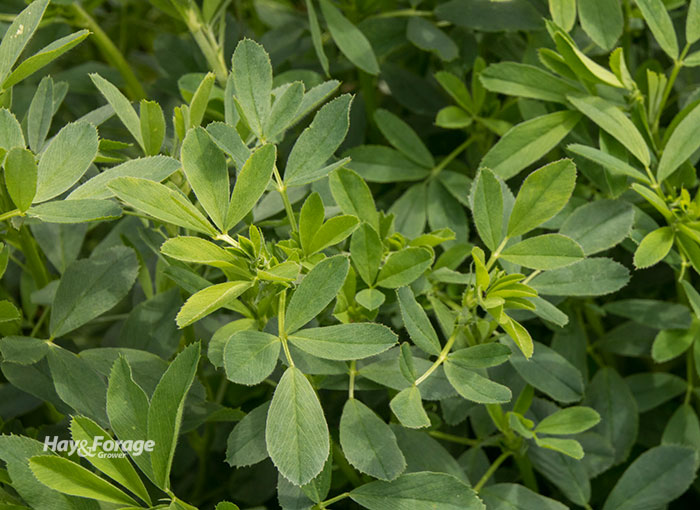
Cattle are by far the largest consumers of alfalfa, but what if this forage could feed humans, too?
This was the question Jo Heuschele posed at last month’s Western Alfalfa & Forage Symposium in Sparks, Nev. The research agronomist with the USDA Agriculture Research Service began her presentation by reporting that harvested acres of alfalfa in the U.S. have been on a steady descent for the past several years. While there are many factors affecting this downfall, she attributed weaker demand from the livestock sector as one of the major drivers.
Heuschele noted the number of meat production animals in the U.S. has been on the rise for the past five decades; however, most of this growth has been in poultry and swine. The number of cattle and calves, on the other hand, has been on a slight decline.
“Most of our alfalfa is going to the cattle market, but our cow numbers are dropping steadily,” Heuschele stated. “We need a new consumer if we want to increase our alfalfa acres.”
That new consumer could be humans. Alfalfa protein has potential to be a prominent player in the plant-based food market, and it may have a place in other markets for human consumption as well.
“The plant-based food market is expected to increase by 14% by 2028 in the U.S., and the global market will increase by 34% by 2030. This translates to billions of dollars, and we want a piece of it,” Heuschele asserted.
It’s in the leaves
Despite present and future interest in plant-based protein, Heuschele said this market emerged in the 1940s. Processing technologies and marketing efforts have mostly been geared toward seed protein since then, but utilizing leaf protein is the more practical approach when it comes to alfalfa.
Alfalfa leaves can be 35% to 45% protein, and they contain up to 10% of the human requirements for calcium, copper, iron, magnesium, and vitamin K. Heuschele suggested this would be a major selling point for health-conscious consumers.
She said the alfalfa protein extraction process would essentially separate solid, fibrous forage material from green and brown plant juices. The green plant juice would be further processed into white protein, which is the type of protein used in food development, similar to the protein found in egg whites. The brown plant juice would be a by-product that could be fermented for livestock feed.
In addition to the protein concentrate from green plant juice, Heuschele said secondary compounds from the extraction process could be used for human pharmaceuticals and synthetic fiber production. The separated solids could also be dried for livestock feed or used to make biofuel.
Problems with protein
While there is potential for alfalfa protein, Heuschele said limiting proteolysis, or the breakdown of protein into amino acids, will be a major challenge between forage harvest and processing. Hydrolysis can also be heightened the longer harvested plants retain moisture, which would reduce alfalfa protein concentrations as well.
Equipment and technology for leaf protein extraction is not widely available, and more research is needed to determine the best way to utilize alfalfa for plant-based foods. With that said, Heuschele predicted the biggest challenge may be convincing consumers to incorporate alfalfa protein into their diets and lifestyles.
“We can grow the alfalfa and we can extract protein, but we need people to help us market it,” she concluded. “We need to let people know alfalfa has an opportunity in the plant-based food market, that it is nutritious, and that it can be utilized by us.”

